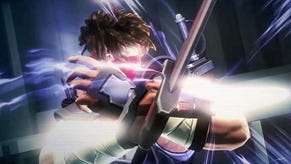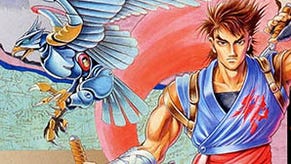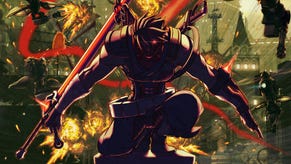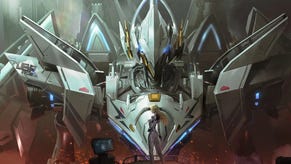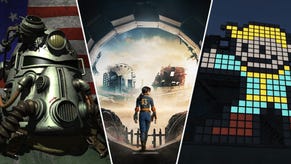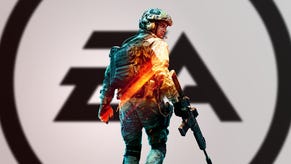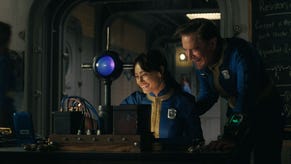Daily Classic: Strider 2, an Arcade Game Born into the Wrong Era
A faithful sequel that fell flat through no fault of its own.
This article first appeared on USgamer, a partner publication of VG247. Some content, such as this article, has been migrated to VG247 for posterity after USgamer's closure - but it has not been edited or further vetted by the VG247 team.
Capcom never intended the original Strider to be a standalone work. On the contrary, it was but a single arm of what was meant to be a vast media empire; besides the arcade game everyone knows and loves, a completely different NES game and the manga that tied into it debuted around the same time.
Also, for a decade afterwards, not much happened with Strider. Capcom allowed a third party to create one terrible sequel (long since disavowed), but aside from a number of ports of the arcade game, its protagonist Hiryu vanished for years. Only after Hiryu became the breakout star of Marvel vs. Capcom did the company think to bring him back for a proper adventure.
Much had changed in the decade since Strider's debut, though. Arcades had boiled down to dancing and fighting games; graphics had gone 3D, and classic platformers had all but died off with the deprecation of 2D graphics. Oh, and Strider's lead designer — Kouichi Yotsui — long since departed from Capcom. Yet despite all of these things working against reviving Strider as a faithful sequel to the arcade original, that's exactly what Capcom decided to do.
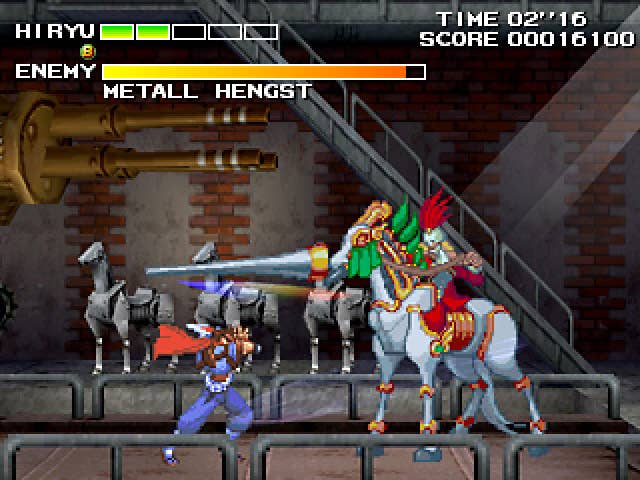
Perhaps not surprisingly, Strider 2 missed the mark just a bit. How could it not have? Pretty much nobody wanted to play a high-speed action platformer at the arcade in 1999. Capcom seemingly realized this; they built the game on the Sony ZN-2 board, which basically amounted to a beefed-up PlayStation, similar to the relationship between Sega's Dreamcast and NAOMI board. That solved the problem of porting the game to the world's most popular console (they basically just needed to adapt to the home console's smaller RAM capacity), but in turn it created a boatload of new issues. Specifically, the PlayStation was notoriously terrible for 2D games, with the glorious Castlevania: Symphony of the Night representing a precious exception rather than the rule, and Strider 2 suffered for it.
You can see what Capcom was going for with the game. It works very much in the same spirit as its arcade predecessor, offering a constant cavalcade of interesting set pieces and scenarios for players to conquer with rapid swordplay. While it reprised certain elements of the original (Solo, the Grandmaster, the perspective-flipping Gravity Cores) it didn't merely settle for simply rehashing a 10-year-old adventure. It took players to new regions, gave them new challenges, integrated new mechanics, and confronted them with new bosses. In nearly every way that mattered, Strider 2 felt like the true Strider sequel fans had craved for a decade.
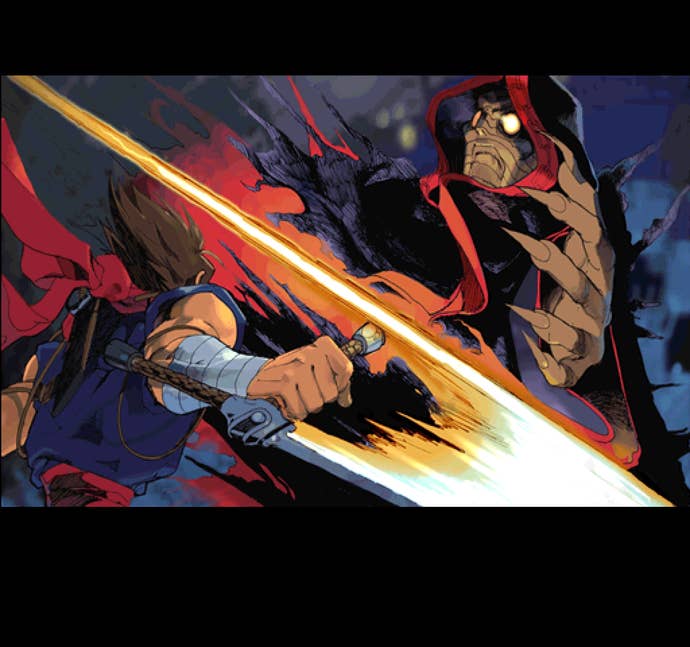
Where it fell short was in its polish. Visually, the game was a mess; its beautifully drawn and animated character sprites meshed awkwardly into a world built of clumsy PlayStation polygons. The 3D nature of the game allowed interesting scaling effects and shifts in perspective, but any time the sprites zoomed away from their 100% scale default they became an indecipherable mass of pixel blobs. As often happened with games that mixed sprites and polygons, Strider 2's characters never quite seemed to connect fully with the backgrounds, leaving the action feeling slightly floaty and imprecise. Worst of all, the PlayStation hardware's constrained memory meant that each level was broken into separate chunks that had to load separately, destroying the sense of sequential continuity that made the original Strider so fluid. And, finally, the game didn't really penalize failure besides resetting the score to zero — Hiryu would simply resume fighting once you continued rather than returning to a checkpoint — leaving the entire thing with no sense of urgency or challenge.
Despite all of these technical failings, the actual content of Strider 2 largely lived up to that of its esteemed predecessor. For all its reprised content, it had plenty of original ideas, too. It also had a tendency to put great new spins on old material; the obligatory Ouroboros battle didn't take place in a parliamentary chamber, for example, but instead played out high above a futuristic city which saw Hiryu clinging to the monstrosity he was attacking for lack of firm footing below. Likewise, bounty hunter Solo became a sort of running boss, harassing Hiryu through the latter stages while playing hard-to-get.
In short, Strider 2 was a faithful sequel in spirit, but its flesh turned out to be just a bit too weak to house its spirit. It never quite lived up to its considerable potential, but not for lack of ambition and talent. It'll be interesting to see how the first true follow-up to Strider 2 — Double Helix's Strider, which debuts tomorrow — lives up to its apparent ambition of making good on Strider 2's efforts.

